7 Places To Visit On Your Japan Holiday That Don't Include The Golden Triangle
When planning your trip to the land of the rising sun, consider these lesser-known locations - they're likely to offer everything you’re looking for from Japan and more.

2min read
Published 26 February 2024
When planning your trip to the land of the rising sun, consider these lesser-known locations - they're likely to offer everything you’re looking for from Japan and more.
So often when people plan their Japan trips, they focus on the same three cities – Tokyo, Kyoto and Osaka (known affectionately as the “Golden Triangle” of Japan). Or they write Japan off as a destination entirely; intimidated by the prospect of the busy crowds and loud cities. And look, it can get very busy there, I won’t lie.
This list is for those travellers – people who are interested in more than the usual recommendations of Shibuya and the Golden Pavilion. Or those who get anxious in busy train stations. When planning your trip to the land of the rising sun, please consider these lesser-known locations. I promise they will offer everything you’re looking for from Japan and more.

Photo by Jon Munro
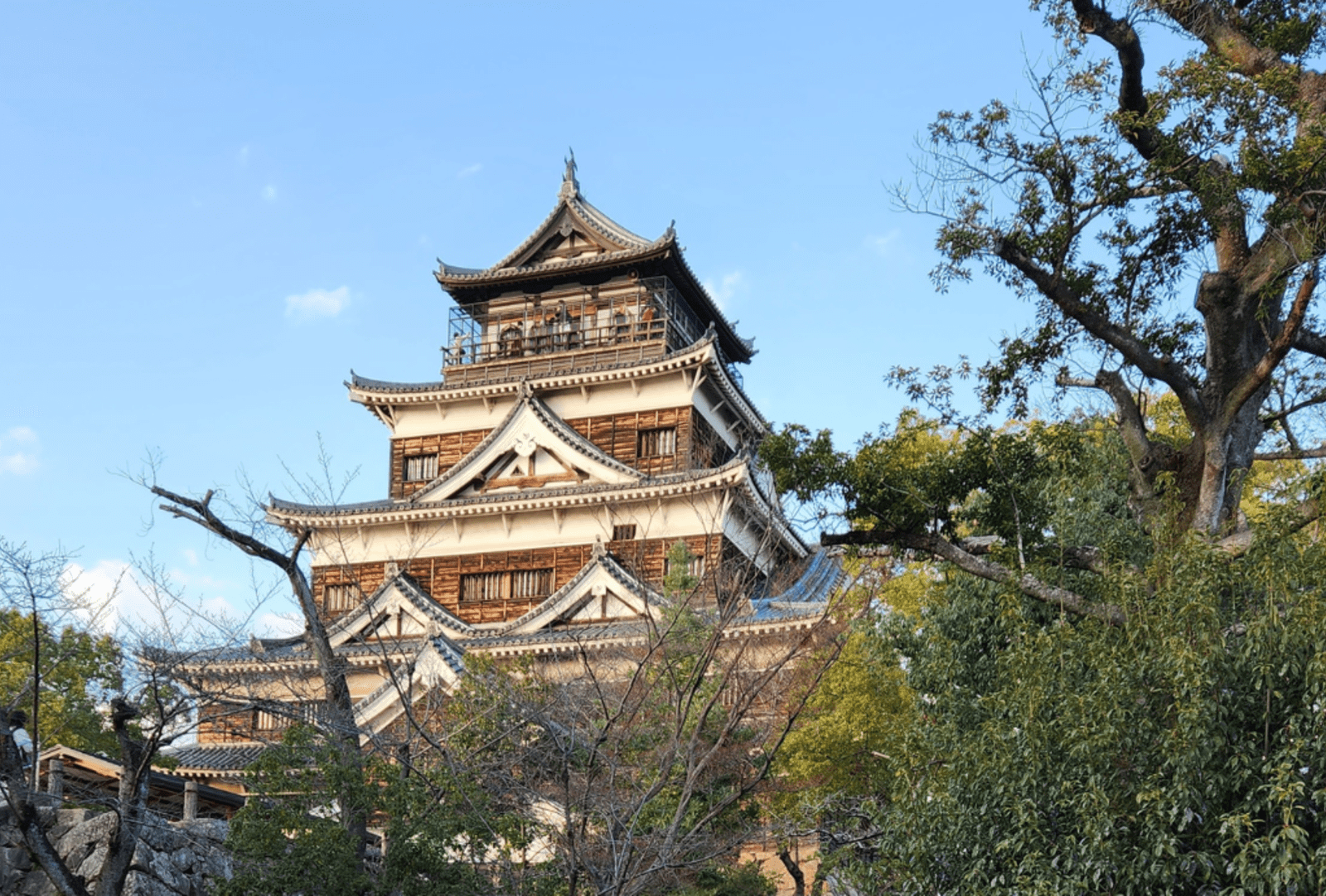
Photo by Jon Munro

Photo by Jon Munro
7. Hiroshima AND Miyajima Island
Let’s address the elephant in the room – Hiroshima has a tragic past, and the name conjures up some very unfortunate history. Hiroshima and Nagasaki were both destroyed in World War II by nuclear weapons. A visit to the Hiroshima Memorial Peace Park and Museum makes for an emotional trip – you can’t help but get choked up learning the history of what took place here. That said, there is so much more to this city than just the Atom Dome, and it would be a disservice to only remember the bombs when thinking of Hiroshima.
The city features Hiroshima Castle – a recreation of the 16th century castle that stood as a seat of power in Western Japan. Inside you can discover important history about the region, and see artifacts like samurai swords, armour, and letters written by feudal lords on bamboo paper. A short walk from Hiroshima Castle is Shukkeien Garden – a peaceful, traditional Japanese garden featuring tea houses, ponds, and popular Japanese flora including Cherry Blossoms in early April. It’s a green oasis in the hustle and bustle of the city, and a must see.
And it would be remiss of me not to mention Miyajima Island. Also known as Itsukushima, Miyajima is less than an hour from the city centre, with regular ferries running to and from the island. Miyajima means “Shrine Island” in Japanese and features a floating torii gate – one of the best views in all of Japan. Depending on the time of day and the tide, you can walk out and go through the Tori gate. We visited around 10am when the tide was in, and the view was stunning.
The island features other popular locations, such as Itsukushima Shrine (built entirely overwater), and Daisho-in Temple. There are also mountain walking trails, and a cable car to get spectacular views of the island. And did I mention that the island is covered in wild deer? These gentle animals roam the island and are very sociable. You can’t pet or feed them, but they are more than happy to walk with you along the streets or take a photo with you.
Top Tip for Hiroshima/Miyajima
The popular Japanese street food Okonomiyaki, is prepared differently in Hiroshima than the rest of Japan. This filling meal consists of cabbage, flour, bean sprouts, onions, and a lot of sauce, but in Hiroshima they also add egg and yakisoba noodles. The combination is a taste sensation that is delicious and a must-eat while you’re here! We found a place called Okonomimura, which is a five-storey building with dozens of restaurants all selling Okonomiyaki, but you can find places selling it all over the city.
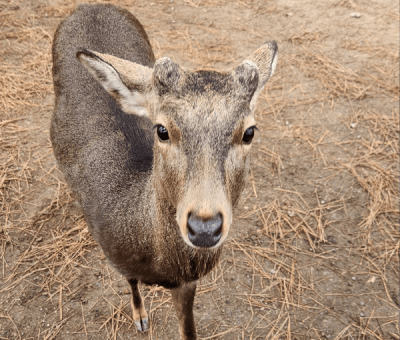
Photo by Jon Munro

Photo by Jon Munro

Photo by Jon Munro
6. Nara
Less than an hour from both Osaka and Kyoto, Nara was the first capital city of Japan, back in 710. The city is rich with history, and features some of Japan’s oldest temples. Todaiji temple (pictured below), is one of the worlds largest wooden buildings, and houses a bronze Buddha statue measuring 15 metres tall.
If there’s one thing that’s put Nara on the map though, it’s the deer. If you were disappointed to read that you couldn’t feed the deer in Miyajima, you’ll be pleased to know that the deer here can be fed! You can buy deer crackers from vendors for about $2, and then you’ll be swarmed by hungry deer.
These delicate creatures live in the nearby Nara mountains and have been coming down into the city for over one thousand years. They can be a little aggressive when you have food, and they have been known to nibble on clothes or prams, but the sight of deer sitting around the streets or at a crosswalk (they know to cross the street at crosswalks!) is too good to pass up.
Top Tip for Nara
Nara is a great hub for your Japan stay – it’s quiet enough to avoid the crowds, but you can do day trips to Osaka and Kyoto in about 30-45 minutes by train. A great way to have the best of both worlds!
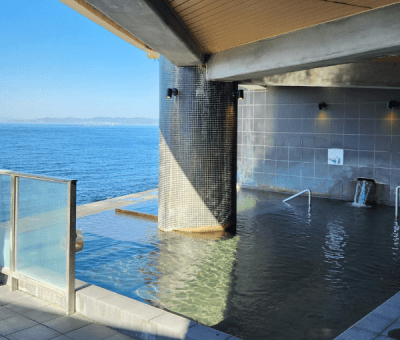
Photo by Jon Munro

Photo by Jon Munro

Photo by Jon Munro
5. Shirahama
Down on the Southern coast of the Kansai region, the onsen town of Shirahama sits eagerly inviting guests to relax and unwind. Shirahama translates to “white beach” in Japanese, aptly named after the pure white sand that makes up their main beach. And fun fact, that sand was brought over from Brisbane, Moreton Island and Western Australia! You KNOW we do beaches right when other countries are importing them!
The little town offers lots to explore too. We hired bikes and rode to all the major points – including Senjojiki Rock Plateau, Engetsu Island, Heisogen Park, and Shirahama Beach – in about three hours. There’s also a LOT of onsens, or hot springs. Shirahama has been known for its onsen for over a thousand years. Our room in the Nanki-Shirahama Marriot Hotel included a private onsen overlooking the beach. Waking up and bathing in hot spring water, watching the sunrise over that pure white beach felt like the ultimate in decadent luxury! Shirahama is perfect for both couples and families. The kids will love playing at the beach or checking out the Adventure World theme park, while couples will find romantic vistas and relaxing hot springs.
Top Tip for Shirahama
Visit during the summer to take part in amazing summer festivals and see fireworks in the evenings.
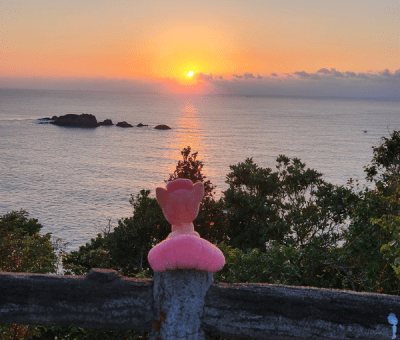
Photo by Jon Munro

Photo by Jon Munro

Photo by Jon Munro
4. Nachi Katsuura
As an island nation, fishing is one of Japan’s most important historical past times. From the second you reach Katsuura, the salt smell of the ocean fills your lungs and revitalises you. For fans of tuna, you can’t miss the morning tuna auction at the Katsuura Fish Market. You can also go for breakfast by the ocean and sample some of the freshly caught fish.
Or, if you want a unique onsen experience, Hotel Urashima features a natural hot spring bath in a cave, with the ocean splashing into the cave while you relax. Nachi-Katsuura acts as a great hub for visiting many of the cultural wonders of the region too – it’s less than an hour from some very special Buddhist temples (more on them later!)
Top Tip For Nachi-Katsuura
Venture to the top of Hotel Urashima to see Urashimainari Shrine. At either sunrise or sunset the view is unmissable. How to get to the top of the Hotel? You ride their 33-story escalator of course!
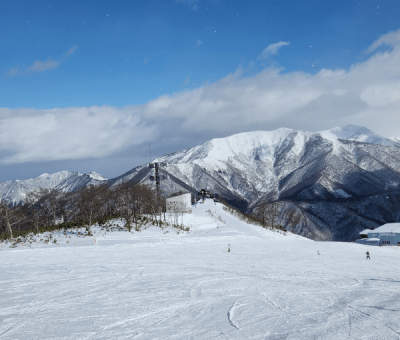
Photo by Jon Munro
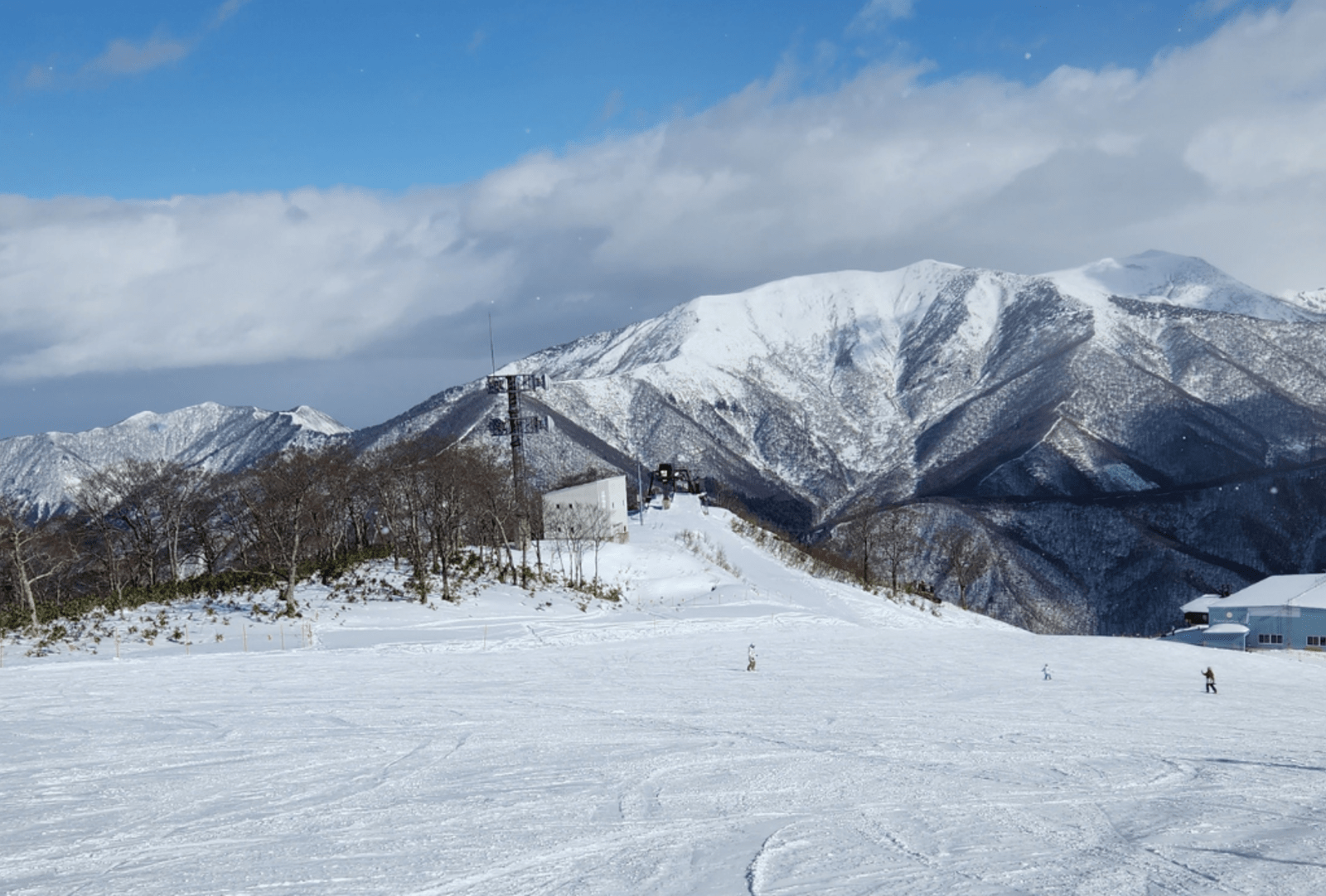
Photo by Jon Munro

Photo by Jon Munro
3. Naeba
One of the most popular reasons to travel to Japan as an Australian is for the snow. As an avid snowboarder, it’s been my go-to for great powder, good food and close accommodation. The most popular destinations are Hakuba, Niseko, and Nozawaonsen – but for those looking for a quieter experience, I would recommend Mount Naeba. About two hours North of Tokyo by bullet train, the town of Naeba might be small, but the snow was incredible. It also features the ‘Dragondola’ – spanning 5,481m it’s Japan’s longest chairlift. The mountain stays open late too, with some chairlifts still running as late as 8pm.
We were lucky enough to stay in the Prince Hotel, which not only featured spectacular views of the ski runs, but also contained dozens of restaurants, bars, a pharmacy, children’s play areas and public bath houses. They also have a chairlift connected to the hotel, which any skier or snowboarder will tell you is an amazing thing to have. And if you need a rest day, the town of Echigo-Yuzawa is only 25 minutes away by bus and features an all-you-can-drink sake shop, onsens, and nature walks.
Top Tip For Naeba
Try a coffee from one of the vending machines! Japan is famous for its vending machines, and Naeba had the widest variety of coffee-in-a-can I’ve ever seen. It comes out at the perfect temperature too – perfect for those cold nights!
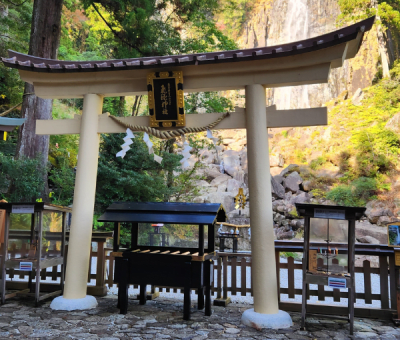
Photo by Jon Munro

Photo by Jon Munro

Photo by Jon Munro
2. Visit the Kumano Sanzan
For hundreds of years, followers of the Shinto religion have made pilgrimages to the three Kumano shrines. About 45 minutes North of Nachi Katsuura stands Kumano Hayatama Taisha. The striking red, white and greens of the buildings, flanked by stone statues of dogs and dragons guarding the shrine from evil spirits, and the national treasures housed within, are truly impressive. Further inland the Kumano Nachi Taisha offers great views of Nachi Waterfall – Japan’s tallest! These two locations offer hundreds of years of history, as well as beautiful architecture and all the serenity you could hope for from a Japanese shrine, without the crowds!
The last and biggest of the three shrines in the Kumano Sanzan, Kumano Hongu Taisha is said to sanctify four deities, including the Sun Goddess Amaterasu. The main buildings were built sometime in the 9th century but were moved in 1889 due to floods from the nearby river. Rebuilt atop a long winding path of stone steps, the cypress bark roofs, and gold-tipped features create a solemn and serene atmosphere. Nearby to Hongu Taisha stands the largest torii gate in the world. At an impressive 33 meters tall, you’ll get dizzy looking up at it as you walk through, exploring the nearby forests and nature walks.
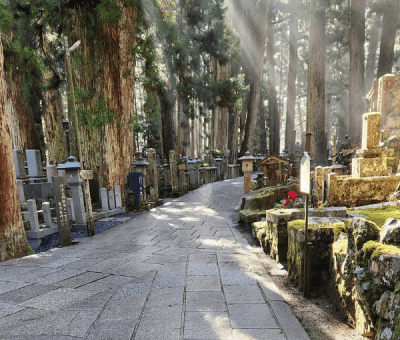
Photo by Jon Munro

Photo by Jon Munro

Photo by Jon Munro
1. Koyasan
Nestled high in the mountains of the Kansai region stands Koyasan, or Mount Koya. Up on these misty mountain trails, I saw a side of Japan I’d never seen before. Many of the temples up here offer overnight lodging, where you can experience a traditional Buddhist monk lifestyle – including meditation, morning prayers and vegan meals, all meticulously prepared and served on tatami mats. With a tummy full of delicious temple food, I went for an evening stroll. On my 30-minute night time walk, I ran into…nobody. Anyone who’s visited Japan will tell you about the crowds of people, and up here, in this little mountain village, I felt completely alone – a visitor wandering through the mists and tall trees, every now and then spotting a quiet pagoda or temple. It was a surreal experience.
Koyasan is also host to some of the most important locations for followers of Shingon Buddhism. The founder of the religion – Kobo Daishi, or Kukai – is enshrined in Okunoin Cemetery, where he meditates and waits for Buddha. The local monks have brought food to his mausoleum every day for the last 1,200 years. You can see this tradition in person, and wander among the hundreds of thousands of gravestones. By day, rays of sunlight shine down through the trees, while at nighttime, thick fog descends on the cemetery, increasing the spiritual atmosphere.
A short walk from Okunoin cemetery stands Kongobuji Temple – the head monastery of Shingon Buddhism. Built in the 16th century, the site offers a glimpse at paintings, wall scrolls, carvings, and sliding doors, all of which are priceless cultural artifacts. It also houses Banryutei Rock Garden, the largest rock garden in Japan. If you want a view of Japanese culture and history, Koyasan is one of the best places to see it.
Top Tip for Koyasan
Much of Kongobuji Temple and Okunoin Cemetery can only be seen in person; no photographs or filming are allowed. Trust me, the sight of these places will stay with you – no photography required.
So, what do you think?
Have I convinced you to visit this beautiful country? Maybe shown you a location you’d never thought to visit?

